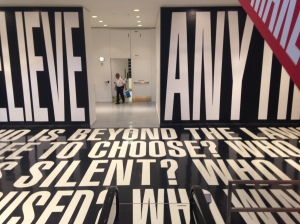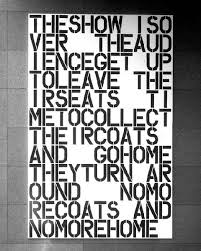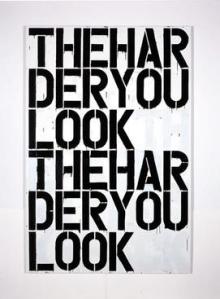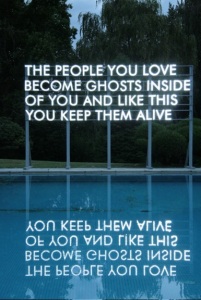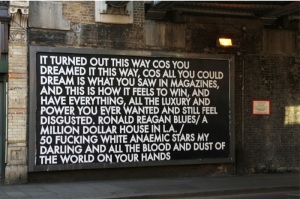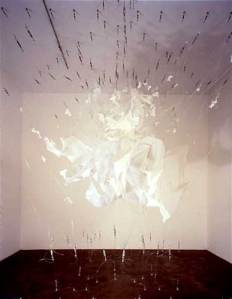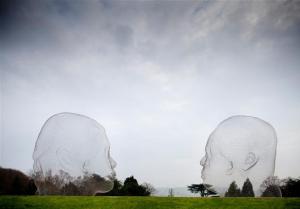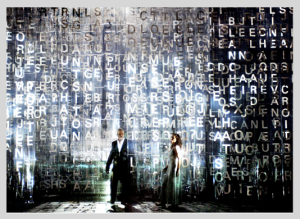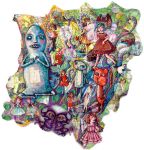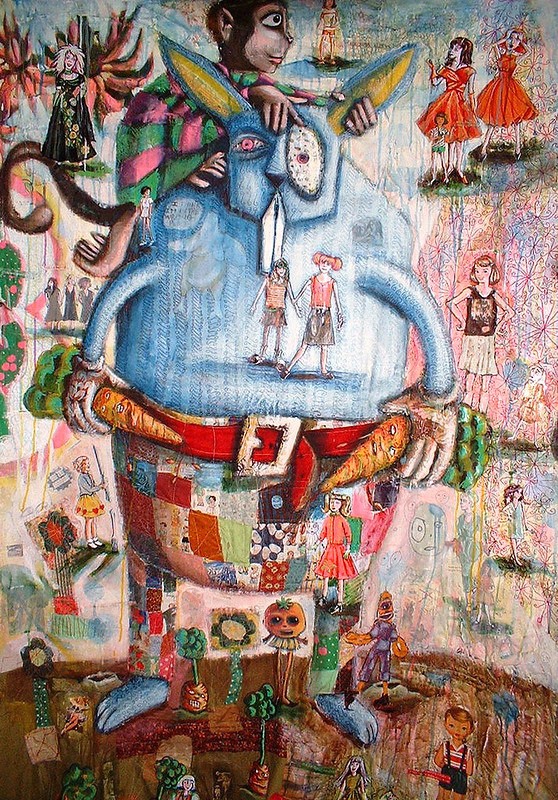“Belief is tricky, because left to it’s own devices it can court a kind of surety, that fears doubt and destroys difference.” Barbara Krugar
I just came back from D.C, the first time I’ve been, and a nice change from NYC for 2 seconds. It didn’t resemble my collagescape from this blog months ago (which I completely forgot I’d made until I decided to write this). Strangely, it looked nothing like it and if I believed in vision boards at all, I’d be suing whomever wrote The Secret right now. It mostly just involved museums, bike rides and beers- which was great- especially seeing Barbara Krugar’s exhibition Belief + Doubt= Sanity at the Hirshhorn.*
It’s been on for a while- 2 years in fact- and will only close in December this year.
She may not show much in L.A, where she’s from (she recently resigned from MOCA’s board over the forced resignation of Paul Schimmel) but she’s honoured in a gigantic room- 6700 sq feet in fact- at the capital, and rightly so. The installation features her infamous slogans in red, white and black, each letter a foot to a foot and a half tall. A room of words so loud they ingulf you, that they are barely readable as you stand upon and amongst them. They demand puzzling over and reading out loud, slowly stringing words into sentences like pearls on a string. Everyone else in the room is doing the same, as you tumble of each other mumbling through phrases like discovering hidden keys.
The power of the words is enormous and intense, a giant brain box of jumbled slogans and questions and tidbits (as always she has a sense of humour), stark and harsh in their contrasting colors, demanding you listen and contemplate.** Too much at points, I left and came back a couple times, enjoying the feeling of being overwhelmed by language.
“Pictures and words seem to become the rallying points for certain assumptions. There are assumptions of truth and falsity and I guess the narratives of falsity are called fictions. I replicate certain words and watch them stray from or coincide with the notions of fact and fiction.” ***
Especially in this exhibition, where the proximity to the capital, could easily put the slogans into a political context, Barbara Krugar is happy to question us on what do we really believe? “She was intrigued by the idea of creating an exhibit that questions power in a museum with such proximity to power.” A museum, in D.C ” ‘ she was intrigued by the idea of creating an exhibit that questions power in a museum with such proximity topower. ‘It is a museum, but it is also in D.C.,’ Kruger says. ‘That brings its own information, context and baggage.'”****
Another artist I was introduced to this weekend also using text as him medium is Christopher Wool. He carried on the tradition of having to step back to understand, but also really played with audience grappling for meaning in his texts, by deliberately adding spaces in odd places, or not- having words join together, so that as the audience read, they have to put in their own spaces and punctuation.
It’s the reading equivalent of trying to draw with your left hand, with a stick.
No amount of staring magically made it make sense, it’s a slow process of figuring it out, which ultimately, when you’ve got the hang of it is quite satisfying.
I don’t think all his works are this way- there are simpeliar ones- but I enjoyed these. Besides, who said it always has to be easy?
** for more images of the installation- and the texts see The Hirshhorn Musuem
also
The Wall Street Journal’s review
*** from Bomb Magazine
**** quoted from this great article from The Washington Post
More about Christopher Wool here and here
And The Guggenheim



